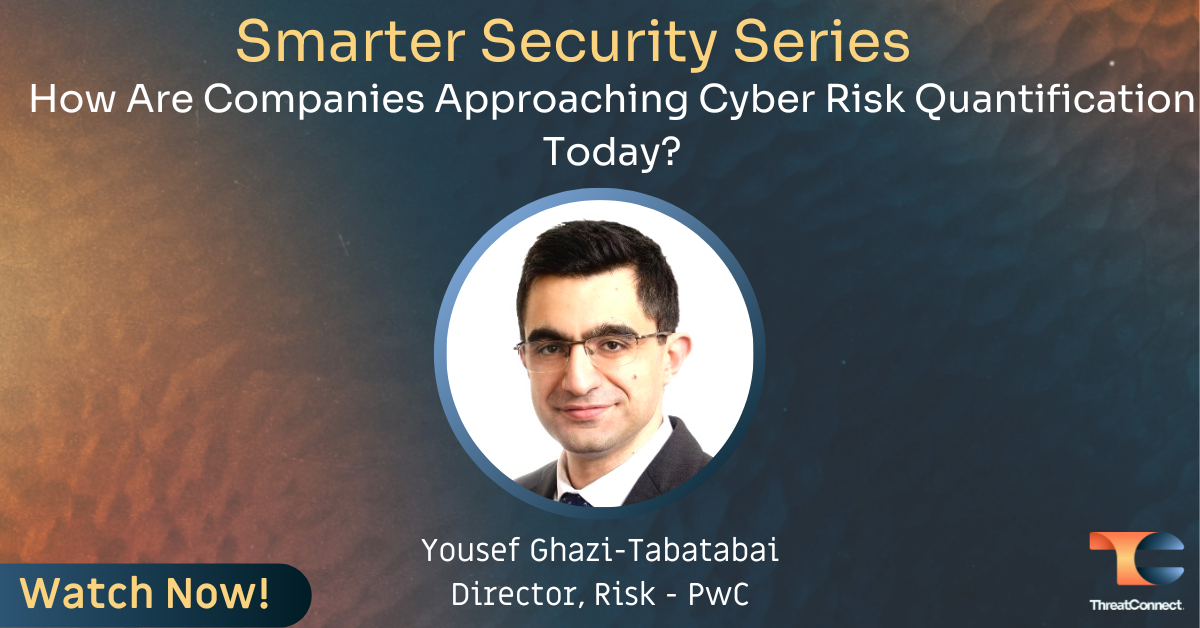Jerry Caponera, the General Manager of Risk Products at ThreatConnect, was joined by Yousef Ghazi-Tabatabai, Director of Cyber Risk at PWC, in this video interview to discuss how companies are approaching Cyber Risk Quantification today. They shared viewpoints on evolving trends in risk management, focusing particularly on risk quantification and reporting.
Yousef provided an overview of security maturity and risk-reporting approaches in various sectors. In his experience, organizations have typically started with a basic understanding of taxonomies, scenarios, threats, and risk types. This foundation paved the way for more qualitative risk assessments. Currently, leading firms are taking the initiative to quantify risk with financial numbers rather than merely relying on heat maps or a 1-5 scoring system.
Yousef pointed out that organizations have been hesitant to do away with heat maps entirely when incorporating risk quantification into overall risk-reporting landscapes. However, he explained that quantification is being seen not just as an additive measure but as a more influential set of metrics. This enables cyber risk teams to engage more effectively with senior stakeholders, aligning with the financial language used by the board and corporate risk handlers.
Discussing the benefits provided by CRQ to senior executives, Yousef highlighted two crucial angles. Firstly, risk quantification helps CEOs manage risk more efficiently and optimizes the role of cybersecurity within the organization. Secondly, it enables CEOs to communicate risk in financial terms to other key stakeholders, such as the CFO, CEO, and CRO, which greatly enhances overall risk understanding.
Yousef expressed that quantification helps identify potential losses more accurately and offers insights into where spending can mitigate loss. Jerry echoed the value of CRQ in budgeting and priority setting, a crucial element given the constant limitations of personnel and resources in security organizations.
The conversation between Jerry and Yousef underscores the growing importance of quantification in the world of risk reporting as it navigates from traditional heat maps to more tangible financial metrics.
